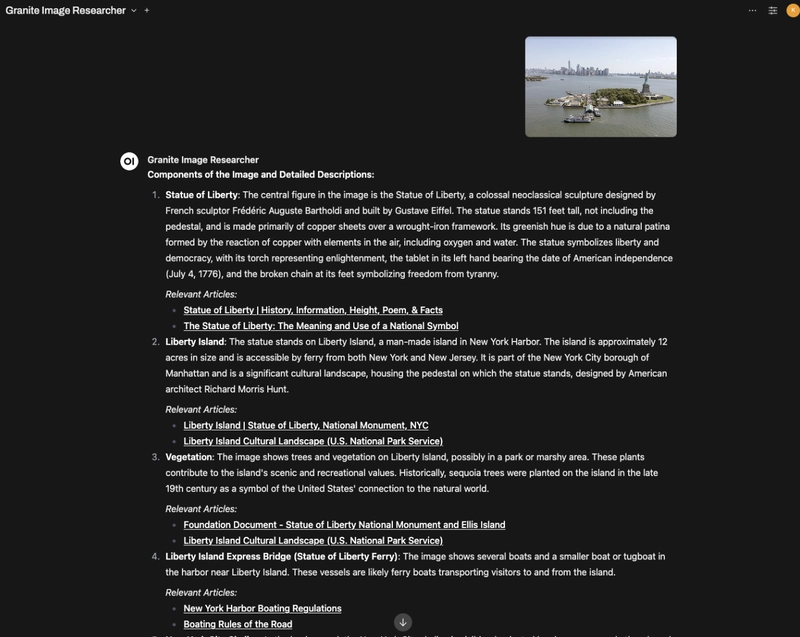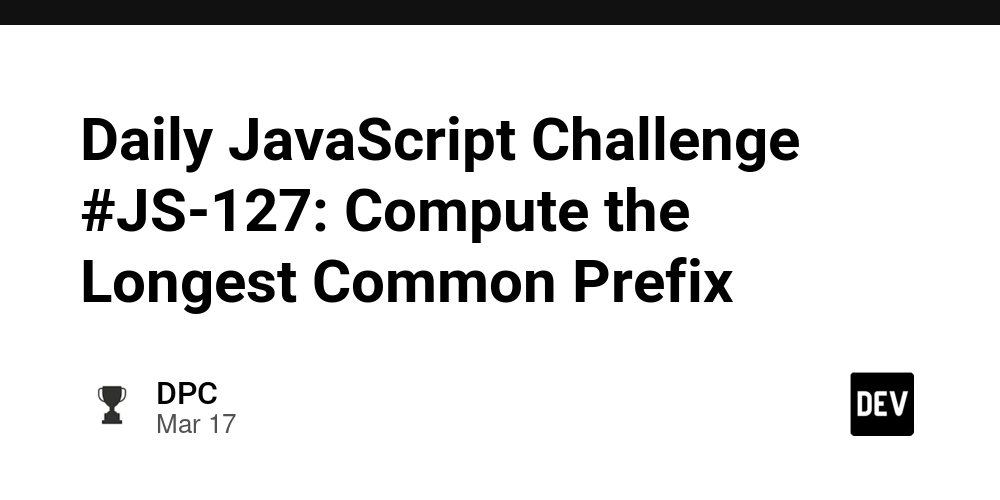Financial Backing for Open Source Projects: Sustaining Innovation and Collaboration
Abstract This post explores the financial backing of open source projects as a vital mechanism for sustaining innovation and community collaboration. We delve into traditional funding models like donations and corporate sponsorships, advanced schemes such as dual licensing, subscription services, bounty programs, and even blockchain-enabled funding. We also review real-world applications—from blockchain-based identity management to NFT marketplaces—and analyze the challenges and limitations inherent in these models. Finally, we provide an outlook on emerging trends, including tokenization and hybrid models that promise to redefine sustainability in open source. Whether you are a developer or a sponsor, this comprehensive overview sheds light on the current ecosystem and points to a future where financial transparency, automation, and decentralized governance empower open source innovation. Introduction Open source software has transcended being merely a development model; it represents a dynamic ecosystem where collaboration, transparency, and innovation converge. At the heart of this model lies a critical need: financial backing. Without sustainable funding, even the most groundbreaking projects risk stagnation despite the best of community efforts. In today's digitally-driven world, innovation spans from blockchain technology and decentralized finance to NFTs and beyond. Financial support ensures that these projects can continue to develop and evolve. The purpose of this post is to provide a holistic view of open source project funding. We will review a range of financial models—from donations and corporate sponsorships to more advanced strategies like dual licensing and blockchain-based tokenization. Additionally, by drawing on reflections from sources such as Open Source Financial Support and Corporate Sponsorship Models, we aim to offer technical insights and actionable strategies for sustaining open source projects. Background and Context Open source projects have been built on the principle of shared knowledge and collaborative effort. Early groundbreaking projects like Linux and Apache established that community-driven development could rival proprietary software. Initially, volunteers powered these systems, often investing countless hours without monetary compensation—a reality that underscored the inherent need for sustainable financial models. Resources such as Unpaid Volunteer Work have chronicled these early efforts and the challenges maintainers faced. Historical Perspective The roots of the open source movement can be traced back to the ethos of freely accessible software, where everyone had the chance to contribute and benefit. The initial phase was marked by: Volunteer Contributions: Enthusiastic developers investing time without pay. Community Collaboration: Shared ideas and cooperative problem solving. Grassroots Movements: Projects growing organically, relying on public goodwill. As these projects expanded, the burden of maintenance and continuous improvement escalated. This led to a need for systematic funding mechanisms to guarantee that quality improvements persisted. The advent of corporate sponsorships, donations via platforms like Patreon and Open Collective, and government grants signaled the beginning of structured financial support. Ecosystem Evolution Today’s ecosystem is vastly more complex and interconnected. Open source projects now grapple with global contributions, with technologies like blockchain enhancing transparency and accountability. Corporate giants such as Google, Microsoft, and Red Hat not only use but actively support these projects, underlining the importance of robust funding models in maintaining independence and quality. Key terminologies include: Financial Backing: Monetary support which sustains project operation, security, and growth. Open Source Funding Models: Strategies that include donations, sponsorships, dual licensing, subscription services, and bounty rewards. Blockchain Integration: Utilizing decentralized ledger technology to streamline funding processes and ensure transparency. This transformation has spurred innovative methods for sustaining projects financially while maintaining community trust and technical excellence. Core Concepts and Features Sustainable open source project funding relies on a diverse mix of financial strategies. Each model contributes uniquely to overall stability and project success. The following sections detail the core approaches: 1. Donations and Crowdfunding Donations and crowdfunding have traditionally been the lifeblood of many projects, enabling community members to directly contribute funds. Platforms like Patreon and Open Collective facilitate recurring donations as well as one-time contributions. Key Features: Community-Driven Funding: Encourages direct support from users. Transparency: Donations
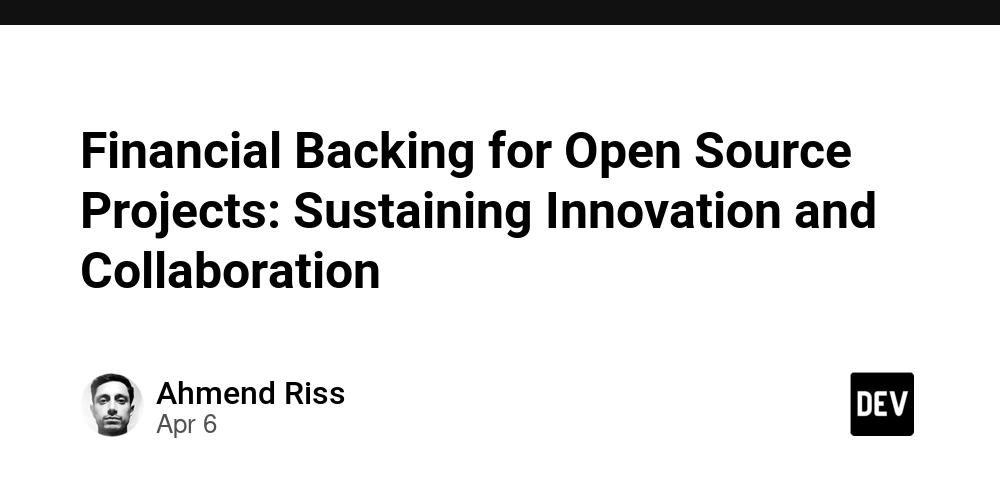
Abstract
This post explores the financial backing of open source projects as a vital mechanism for sustaining innovation and community collaboration. We delve into traditional funding models like donations and corporate sponsorships, advanced schemes such as dual licensing, subscription services, bounty programs, and even blockchain-enabled funding. We also review real-world applications—from blockchain-based identity management to NFT marketplaces—and analyze the challenges and limitations inherent in these models. Finally, we provide an outlook on emerging trends, including tokenization and hybrid models that promise to redefine sustainability in open source. Whether you are a developer or a sponsor, this comprehensive overview sheds light on the current ecosystem and points to a future where financial transparency, automation, and decentralized governance empower open source innovation.
Introduction
Open source software has transcended being merely a development model; it represents a dynamic ecosystem where collaboration, transparency, and innovation converge. At the heart of this model lies a critical need: financial backing. Without sustainable funding, even the most groundbreaking projects risk stagnation despite the best of community efforts. In today's digitally-driven world, innovation spans from blockchain technology and decentralized finance to NFTs and beyond. Financial support ensures that these projects can continue to develop and evolve.
The purpose of this post is to provide a holistic view of open source project funding. We will review a range of financial models—from donations and corporate sponsorships to more advanced strategies like dual licensing and blockchain-based tokenization. Additionally, by drawing on reflections from sources such as Open Source Financial Support and Corporate Sponsorship Models, we aim to offer technical insights and actionable strategies for sustaining open source projects.
Background and Context
Open source projects have been built on the principle of shared knowledge and collaborative effort. Early groundbreaking projects like Linux and Apache established that community-driven development could rival proprietary software. Initially, volunteers powered these systems, often investing countless hours without monetary compensation—a reality that underscored the inherent need for sustainable financial models. Resources such as Unpaid Volunteer Work have chronicled these early efforts and the challenges maintainers faced.
Historical Perspective
The roots of the open source movement can be traced back to the ethos of freely accessible software, where everyone had the chance to contribute and benefit. The initial phase was marked by:
- Volunteer Contributions: Enthusiastic developers investing time without pay.
- Community Collaboration: Shared ideas and cooperative problem solving.
- Grassroots Movements: Projects growing organically, relying on public goodwill.
As these projects expanded, the burden of maintenance and continuous improvement escalated. This led to a need for systematic funding mechanisms to guarantee that quality improvements persisted. The advent of corporate sponsorships, donations via platforms like Patreon and Open Collective, and government grants signaled the beginning of structured financial support.
Ecosystem Evolution
Today’s ecosystem is vastly more complex and interconnected. Open source projects now grapple with global contributions, with technologies like blockchain enhancing transparency and accountability. Corporate giants such as Google, Microsoft, and Red Hat not only use but actively support these projects, underlining the importance of robust funding models in maintaining independence and quality.
Key terminologies include:
- Financial Backing: Monetary support which sustains project operation, security, and growth.
- Open Source Funding Models: Strategies that include donations, sponsorships, dual licensing, subscription services, and bounty rewards.
- Blockchain Integration: Utilizing decentralized ledger technology to streamline funding processes and ensure transparency.
This transformation has spurred innovative methods for sustaining projects financially while maintaining community trust and technical excellence.
Core Concepts and Features
Sustainable open source project funding relies on a diverse mix of financial strategies. Each model contributes uniquely to overall stability and project success. The following sections detail the core approaches:
1. Donations and Crowdfunding
Donations and crowdfunding have traditionally been the lifeblood of many projects, enabling community members to directly contribute funds. Platforms like Patreon and Open Collective facilitate recurring donations as well as one-time contributions.
Key Features:
- Community-Driven Funding: Encourages direct support from users.
- Transparency: Donations are publicly logged, boosting contributor trust.
- Ease of Integration: Typically requires simple set-up methods on project websites.
Example Table: Comparing Donations and Other Models
| Funding Model | Pros | Cons |
|---|---|---|
| Donations/Crowdfunding | Easy to set up, builds community trust | Revenue can be unpredictable |
| Corporate Sponsorships | Offers stable, substantial funding | May introduce influence on project direction |
| Dual Licensing | Balances open source ethics with revenue | Complex to manage, potential for community friction |
| Subscription Services/SaaS | Provides predictable revenue streams | Requires robust infrastructure & ongoing maintenance |
| Bounties/Rewards | Addresses immediate needs, motivates completion | Risk of fragmented focus, limited long-term support |
2. Sponsorships and Grants
Corporate sponsorships and government or foundation grants can provide stable and significant funding, which helps projects manage operational costs and scale effectively. For instance, initiatives like Mozilla’s Open Source Support (MOSS) provide critical funds in exchange for accountability and progress reports.
Key Features:
- Stable Funding: Continuous financial support meant for operations and development.
- Enhanced Accountability: Sponsors require detailed financial reporting, ensuring transparency.
- Brand Association: Partnering with well-known companies may boost project credibility.
3. Dual Licensing and Subscription Services
A dual licensing model allows software to be distributed under an open source license, with a derived commercial version available for enterprises that require extra features or dedicated support. This hybrid approach has enabled companies such as Red Hat to successfully monetize open source code while remaining loyal to the community ethos.
Key Elements:
- Revenue Balance: Facilitates a mix of free software use and paid commercial support.
- Market Reach: Appeals to both individual users and corporate clients.
- Sustainability: Subscription-based SaaS models provide a consistent revenue stream.
4. Bounties and Task-Based Funding
Bounty systems are an emerging funding approach that provides developers with targeted financial incentives to tackle specific tasks. Platforms like Bountysource empower developers by tying rewards directly to the completion of urgent tasks or bugs.
Features:
- Task-Oriented Funding: Funds specific fixes or feature developments.
- Flexible Funding: Adapts quickly to the project’s immediate priorities.
- Competitive Environment: Drives faster problem resolution through financial incentives.
5. Blockchain-Enabled Funding
Blockchain technology is rapidly transforming funding models with its inherent benefits of decentralization and transparency. Platforms such as Gitcoin implement mechanisms like quadratic funding, where community contributions are matched by sponsors to maximize impact.
Blockchain Advantages:
- Transparency: Every funding transaction is recorded on a Decentralized Ledger.
- Decentralized Governance: Reduces reliance on any single funding source.
- Tokenization: Issuing project tokens can align contributor incentives with the project’s long-term success.
- Automated Fund Management: Smart contracts streamline the distribution and tracking of funds.
Applications and Use Cases
The benefits of sustainable financial backing extend well beyond funding themselves; they have real-world applications that drive innovation in various industries.
Case Study 1: Blockchain-Based Identity Management
One practical application is a blockchain-based identity management project. Originally sustained by volunteer contributions, the project later integrated a dual licensing model backed by blockchain-enabled grants via Gitcoin.
Key outcomes included:
- Enhanced Security: Continuous code updates funded by bounty programs helped improve system security.
- Global Developer Participation: Decentralized funding attracted international contributors, diversifying the project’s expertise.
- Scalable Adoption: Dual licensing and subscription services allowed the project to cater to both individual and enterprise needs.
Case Study 2: Open Source NFT Marketplaces
NFT marketplaces are an exciting frontier where open source funding models have played a crucial role. In one example, developers utilized crowdfunding to build the core infrastructure for an NFT marketplace. They later secured additional funding through corporate sponsorships and blockchain-enabled transparency, ensuring steady maintenance and innovation.
Highlights:
- Transparent Transactions: Blockchain integration ensured all financial transactions were recorded and verified.
- Community Trust: Regular updates and open documentation of funding instilled long-term confidence.
- Hybrid Revenue Models: Combining donations, bounties, and subscriptions allowed the marketplace to scale quickly while engaging a global community.
Practical Funding Models: A Bullet List Summary
- Donations/Crowdfunding: Community-based, transparent, and easy to initiate.
- Corporate Sponsorships/Grants: Provide steady and significant funding with accountability measures.
- Dual Licensing/Subscription Services: Strike a balance between free open source and revenue generation.
- Task-Based Bounties: Directly support critical project improvements.
- Blockchain-Enabled Funding: Leverages decentralization, transparency, and automation.
Challenges and Limitations
While there are numerous methods to secure funding, open source projects face significant challenges in maintaining long-term financial support.
Key Challenges:
Unpredictable Donation Streams:
Relying solely on community donations can lead to revenue fluctuations, making it hard to plan long-term budgets.Over-Reliance on Corporate Sponsorship:
While corporate sponsorships provide stability, they may come with strings attached—such as influencing the project’s direction—which can conflict with community-driven goals. See Corporate Sponsorship Models for further insights.Complexity of Dual Licensing:
Dual licensing models require careful balance to ensure that revenue generation does not alienate the grassroots community. License management and legal oversight can become complicated.Technical and Administrative Overheads:
With blockchain-enabled solutions, setting up secure smart contracts and ensuring continuous monitoring and transparency can add to the technical burden.Economic and Regulatory Challenges:
Economic volatility and varying regulatory frameworks across jurisdictions can affect funding stability. Projects must remain agile and prepared for sudden market shifts.
Additional Limitations
- Community Fragmentation: Mismatches between funding priorities and community needs can lead to fragmentation or reduced participation.
- Sustainability Concerns: Even diversified revenue streams may struggle to maintain sufficient funding under market downturns.
Addressing these challenges requires consistent community engagement and transparent communication—key to aligning incentives and safeguarding the open source ethos.
Future Outlook and Innovations
The landscape of project funding is evolving. As developers and sponsors seek novel ways to overcome existing limitations, several promising trends and innovations are emerging.
Emerging Trends:
Expansion of Blockchain Integration:
As blockchain technology improves, more projects will adopt decentralized funding models to ensure transparency and fair distribution of resources.Tokenization and NFTs for Funding:
The tokenization of software licenses and the issuance of NFTs for sponsorships and contributor rewards promise new avenues for monetizing open source contributions. This approach not only encourages participation but also introduces a tradable asset related to project performance.Rise of Hybrid Funding Models:
Future models are expected to combine donations, grants, sponsorships, and blockchain funding into a seamless ecosystem. Such hybrid models can mitigate the risks associated with any single funding stream.Decentralized Governance Tools:
New tools that allow community-based voting on funding priorities will further democratize financial decision-making. This will help ensure that funding aligns closely with community needs.
Innovations on the Horizon
- Automated Fund Management with Smart Contracts: Enhanced automation will streamline fund distribution processes, reduce administrative overhead, and improve accountability.
- Integrated Financial Platforms: Unified platforms that combine crowdfunding, sponsorship management, and blockchain distribution (for example, emerging solutions supported by Innovative Funding for Open Source Projects) will offer project maintainers a one-stop solution.
- Improved Global Compliance and Regulation Tools: As the global economy evolves, tools that help open source projects comply with international laws will be critical in maintaining continuous support.
For additional perspectives on the future of open source funding, consider reading Empowering Innovation: The Role of Open Source Project Funding Platforms and Financial Transparency in Open Source Projects: A Key to Sustainable Development.
Summary
Financial backing is the cornerstone of sustainable open source development. Over the past decades, this model has evolved from reliance on unpaid volunteer work to a sophisticated ecosystem of donations, corporate sponsorships, dual licensing, and blockchain-enabled funding. Each method has its advantages and challenges:
- Donations and Crowdfunding build community trust but may lack predictability.
- Sponsorships and Grants offer stability yet risk compromising project independence.
- Hybrid Models such as dual licensing and subscription services strike a careful balance between maintaining open source ethics and generating revenue.
- Blockchain Integration adds transparency and decentralization, while smart contracts automate fund distribution.
Looking ahead, emerging trends like tokenization, enhanced smart contract management, and decentralized governance tools are set to transform how open source projects are funded. These innovations will drive not only improved financial management but also encourage greater community participation and technical advancement.
For developers and sponsors alike, the call to action is clear: embrace diversified, transparent funding models to ensure that open source projects continue to fuel innovation and collaboration in the digital age.
References and Further Reading
- Original Article on Open Source Financial Aid
- Open Source Financial Support
- Unpaid Volunteer Work
- Corporate Sponsorship Models
- Open Source Project Financial Transparency
- Innovative Funding for Open Source Projects
- Gitcoin
- Bountysource
Additional insights can be found in industry posts such as Empowering Innovation: The Role of Open Source Project Funding Platforms and Financial Transparency in Open Source Projects: A Key to Sustainable Development.
With evolving financial models and innovative funding channels, the future of open source projects looks promising. By integrating traditional funding with breakthrough blockchain technology and decentralized governance, the open source community can ensure robust, sustainable development—keeping the engine of digital innovation running smoothly for years to come.








































































































































































![[The AI Show Episode 143]: ChatGPT Revenue Surge, New AGI Timelines, Amazon’s AI Agent, Claude for Education, Model Context Protocol & LLMs Pass the Turing Test](https://www.marketingaiinstitute.com/hubfs/ep%20143%20cover.png)


















































































































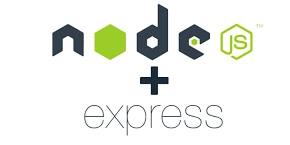
















![From drop-out to software architect with Jason Lengstorf [Podcast #167]](https://cdn.hashnode.com/res/hashnode/image/upload/v1743796461357/f3d19cd7-e6f5-4d7c-8bfc-eb974bc8da68.png?#)
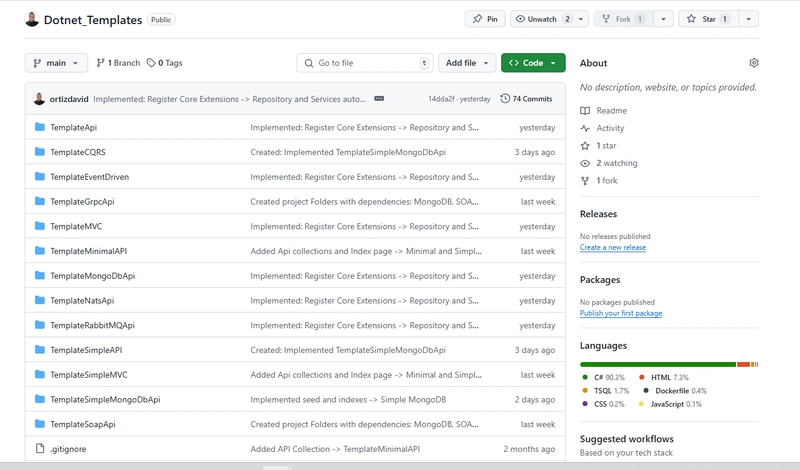









































































































.jpg?#)




























_ArtemisDiana_Alamy.jpg?#)













































































-xl.jpg)












![Yes, the Gemini icon is now bigger and brighter on Android [U]](https://i0.wp.com/9to5google.com/wp-content/uploads/sites/4/2025/02/Gemini-on-Galaxy-S25.jpg?resize=1200%2C628&quality=82&strip=all&ssl=1)











![Apple Rushes Five Planes of iPhones to US Ahead of New Tariffs [Report]](https://www.iclarified.com/images/news/96967/96967/96967-640.jpg)
![Apple Vision Pro 2 Allegedly in Production Ahead of 2025 Launch [Rumor]](https://www.iclarified.com/images/news/96965/96965/96965-640.jpg)





























































































































